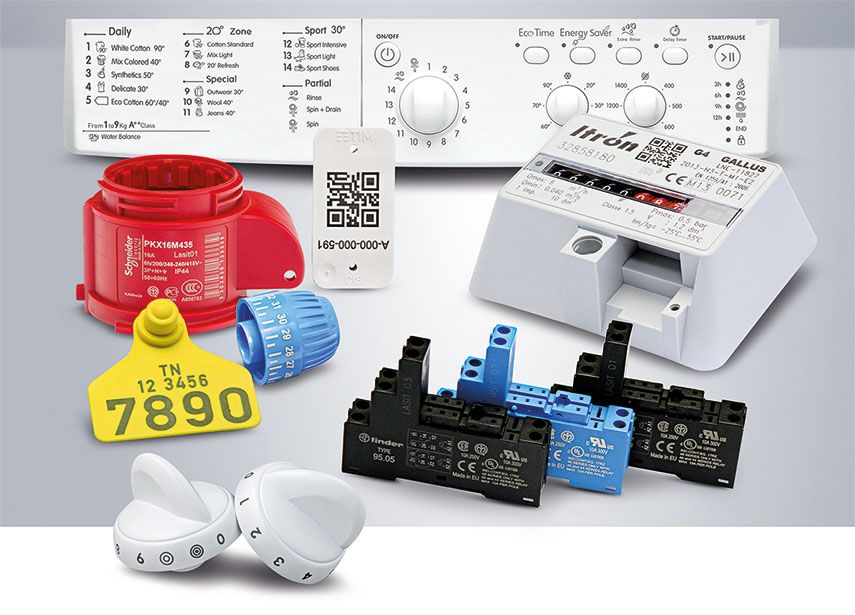The ubiquitous use of plastics for consumer-facing products has given rise to numerous ancillary segments related to tagging a product for identification, in order to trace its origin, for the sake of aesthetic appearance, for branding or product recognition, and for various other purposes. These segments cover a wide range of permanent and short-lived processes such as labeling, embossing, painting, printing, laser marking, laser engraving, etc.
Within these segments are further subsegments based on specific requirements. For example, printing on plastic is susceptible to fading or erasure from natural wear and tear or manual abrasion, which also applies to paint-based methods of marking plastics. However, it is useful in non-critical applications such as advertising signage where fading is simply dealt with by replacing the sign or reprinting it.
Labeling is ideal in cases where the duration of the product’s useful life is limited, as in the case of plastic water bottles or soft drink bottles. On the other hand, long-lived plastic components that are subject to strict traceability standards will require a more permanent solution like laser engraving.
Why Use Laser Marking for Plastics?
There are several advantages to employing laser marking over other methods to mark plastics, as listed below:
First of all, the process does not involve any physical contact between the surface and the marking tool. That means near-zero damage to the area surrounding the mark. This is true for both laser marking and laser engraving.
Second, it does not remove any of the material being marked. One method of laser marking merely oxidizes the area using heat, and the subsequent color change achieved is the actual marking.
Third, it is flexible enough to be used to mark plastics of vastly different shapes, sizes, and dimensions.
Fourth, the process itself is safe in terms of application and use. For example, certain dental equipment that is habitually used inside patients’ mouths is laser-marked but absolutely safe to make and to use.
Fifth, since fiber lasers are typically used for laser marking, there are no consumables involved, which is a significant advantage when marking plastics and other materials in large numbers, as in production lines.
Sixth, they can be integrated into such production lines without excessive disruption to the workflow.
And last, but not least, laser marking is a much more environment-friendly method compared to other marking techniques because it does not use chemicals or inks.
Common Plastics and the Lasers that Mark Them
The three main plastic types that employ laser marking on a large scale are White ABS, Black POM C, and PA66 GF 30 Black. To mark these plastics, the most commonly used lasers are UV lasers, MOPA lasers, and green light lasers. The MOPA, especially, can deliver high contrast for enhanced readability.
Some of the different types of laser marking processes for plastic materials are:
- Color change
- Carbonization
- Engraving
- Foaming
Each process has specific advantages and diverse use-cases. For instance, engraving is typically used where traceability is crucial because it can’t wear out naturally. Carbonization, for example, can be used on white surfaces to achieve high contrast and readability.




